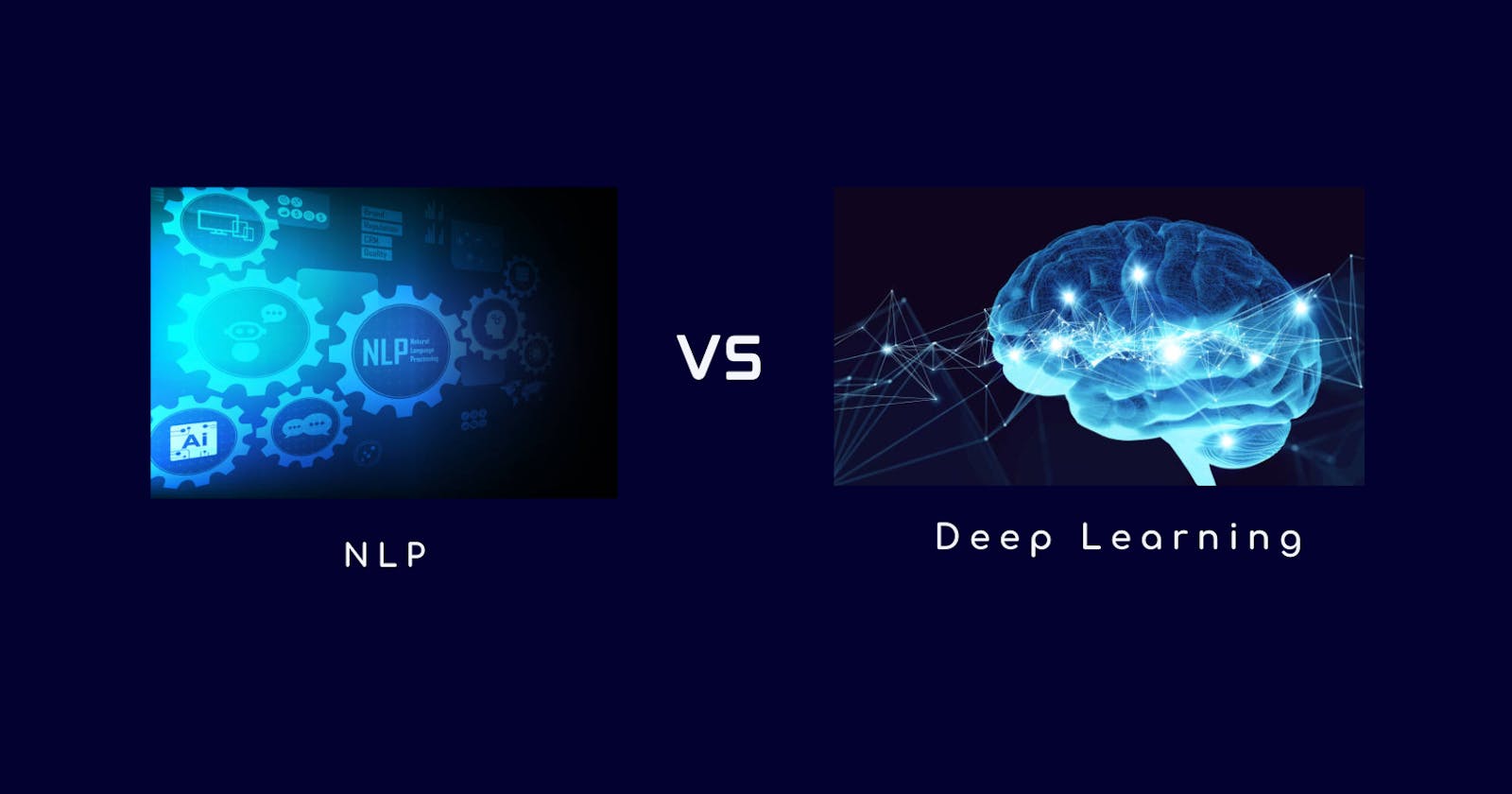Hello there. NLP is a subset of AI and Deep Learning is a subset of Machine Learning. In this tutorial, we will have a look at what is natural language processing (NLP) and deep learning. We will also have a look at the key differences between NLP and Deep Learning and their use cases.

NLP (Natural Language processing)
NLP is a way to teach computers to understand the language of humans. Imagine if you are not a native English speaker and you have received an email in English and you need to reply to that. How you will do that easily? In this case, the NLP application can be helpful. NLP systems can read, understand, translate and create a response for you in a meaningful way. NLP makes this possible by enabling machines to:
Chat with You: NLP enables chatbots and virtual assistants, allowing you to have conversations with machines and answer your queries without human intervention.
Translate Languages: Suppose you have to translate a sentence from English to Hindi. What you will do? Generally, you might use online translators to translate it. NLP helps in such a scenario.
Analyze Sentiments: Let's say a customer has posted a review on an e-commerce site. By reading the review, NLP can figure out if the customer is happy, sad, or neutral. This helps businesses understand the feelings of customers.
Summarize Texts: NLP can read through long articles and news posts and summarize them in a few sentences by keeping the important information.
Deep Learning
Deep Learning is like teaching computers to learn from examples. Let's say you teach a boy what a dog looks like by showing many different pictures of a dog. Now if you present a new picture of the dog in front of the boy, he should be able to easily identify whether the picture is of a dog or not. Deep Learning helps computers recognize patterns and similarly make decisions. It’s vital because:
Recognizing Images: Deep Learning helps computers see and understand pictures and videos, making it useful in things like facial recognition and self-driving cars.
Understanding Speech: Have you talked to Siri or Alexa? Deep Learning enables these devices to understand and respond to your voice.
Predicting Outcomes: Deep Learning can analyze vast amounts of data and predict things. For example, it's used in predicting weather, stock market trends, and even recommending new movies based on past movies you have watched.
NLP and Deep learning work together also. Apple's virtual assistant Siri, is an example of a technology that utilizes both NLP and Deep Learning. When you speak to Siri, NLP helps in understanding the words, sentences, and the intent behind your query. It enables Siri to recognize patterns in human language, interpret your voice command, and convert it into a readable format. Deep Learning techniques are used for the speech recognition component of Siri. When you speak, Deep Learning algorithms analyze the audio patterns and convert them into text. Deep Learning models, such as Recurrent Neural Networks (RNNs), are particularly effective in processing sequential data like speech, allowing Siri to accurately transcribe your voice commands.
The key difference between NLP and Deep Learning
NLP is mainly centred around understanding, interpreting, and generating human language. It involves tasks like language translation, sentiment analysis, and chatbots.
Deep learning concentrates on learning patterns from data using neural networks. It is applicable in tasks like image recognition, speech analysis, and language understanding.
In essence, while NLP specializes in language-related tasks using linguistic and statistical methods, Deep Learning employs neural networks to directly learn patterns from data. Both fields significantly contribute to the advancements in artificial intelligence, often complementing each other in various applications.

